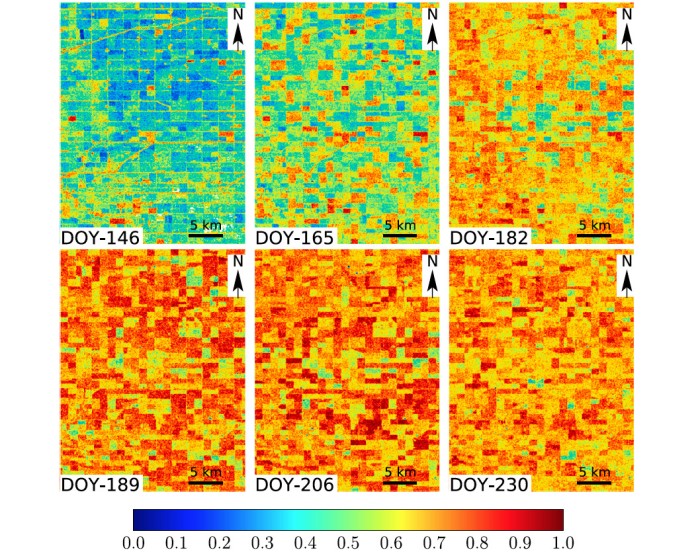Narayanarao Bhogapurapu, Subhadip Dey, Avik Bhattacharya, Dipankar Mandal, Juan M. Lopez-Sanchez, Heather McNairn, Carlos López-Martínez, Y.S. Rao, “Dual-polarimetric descriptors from Sentinel-1 GRD SAR data for crop growth assessment,” ISPRS Journal of Photogrammetry and Remote Sensing, vol. 178, p. 20-35, Aug 2021
Summary
Accurate and high-resolution spatio-temporal information about crop phenology obtained from Synthetic Aperture Radar (SAR) data is an essential component for crop management and yield estimation at a local scale. Crop growth monitoring studies seldom exploit complete polarimetric information contained in dual-pol GRD SAR data. In this study, we propose three polarimetric descriptors: the pseudo scattering-type parameter (θc), the pseudo scattering entropy parameter (Hc), and the co-pol purity parameter (mc) from dual-pol S1 GRD SAR data. We also introduce a novel unsupervised clustering framework using Hc and θc with six clustering zones to represent various scattering mechanisms. We implemented the proposed algorithm on the cloud-based Google Earth Engine (GEE) platform for Sentinel-1 SAR data. We have shown the sensitivity of these descriptors over a time series of data for wheat and canola crops at a test site in Canada. From the leaf development stage to the flowering stage for both crops, the pseudo scattering-type parameter θc changes by approximately 17°. Moreover, within the entire phenology window, both mc and Hc varies by about 0.6. The effectiveness of θc and Hc to cluster the phenological stages for the two crops is also evident from the clustering plot. During the leaf development stage, about 90% of the sampling points were clustered into the low to medium entropy scattering zone for both the crops. Throughout the flowering stage, the entire cluster shifted into the high entropy vegetation scattering zone. Finally, during the ripening stage, the clusters of sample points were split between the high entropy vegetation scattering zone and the high entropy distributed scattering zone, with >55% of the sampling points in the high entropy distributed scattering zone. This innovative clustering framework will facilitate the operational use of S1 GRD SAR data for agricultural applications.

